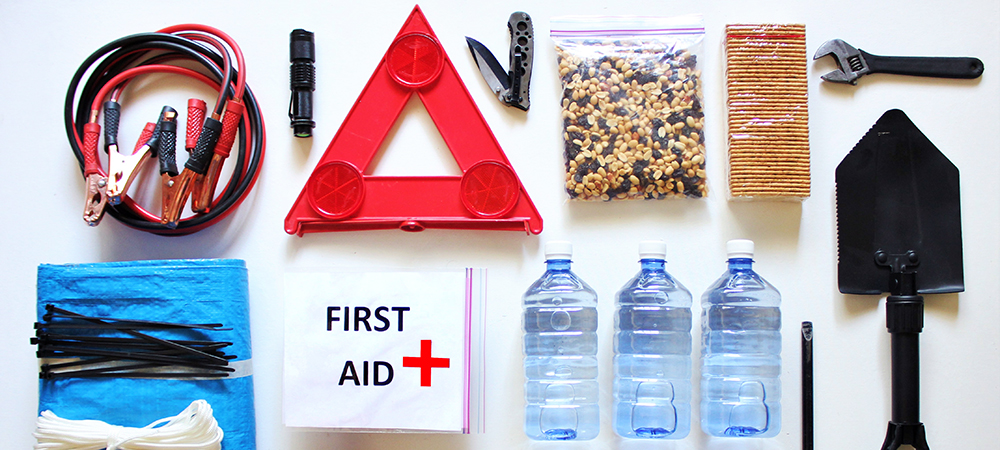Emergency on the road in winter, what to do?
March 3, 2023
March 3, 2023
Winter weather can be unpredictable, especially in Canada, where temperatures can drop to extremely low levels. For example, facing a temperature drop of more than 15 degrees Celsius in a few hours is unusual but not impossible. And a sunny day can turn into a snowstorm pretty quickly! Intense temperature variations are the perfect conditions for unexpected ice patches on the road.
When driving during winter, it's essential to be prepared for emergencies and to know what to do in case of a breakdown or other unexpected events.
Safety and anticipations are key to reducing anxiety and panic when facing the unexpected. Here are some tips for what to do in case of emergencies on the road in winter in Canada:
-
Plan your route: Before setting out on a winter road trip, it's important to plan your route and check weather conditions along the way. If road conditions are hazardous, consider postponing your trip or taking an alternate route.
-
Prepare your vehicle: Before hitting the road, ensure your vehicle is in good working order and equipped to handle winter weather conditions. Check your tires tread, brakes, battery, and oil levels, and ensure you have winter tires and a snowbrush and scraper. Also, it’s best to bring emergency blankets, or normal ones if that’s what you have, water bottles, snacks and hand/feet warmers. Just in case you would have to wait for the tow truck for a while.
-
Keep an emergency kit in your vehicle: It's a good idea to keep an emergency kit in your vehicle at all times, but especially during the winter months. Your kit should include a shovel, blankets, extra clothing, snacks and water bottles, a flashlight, and a cell phone charger.
-
Drive slowly and carefully: Snow and ice can make roads slippery and dangerous, so it's important to drive slowly and carefully. Leave plenty of space between you and the vehicle in front of you, and allow extra time to reach your destination.
-
Avoid sudden movements: Sudden movements, such as braking or accelerating too quickly, can cause your vehicle to lose control on slippery roads. Make smooth and gradual movements, and avoid sudden stops and starts.
-
Stay with your vehicle: If your car breaks down in a remote area, it's important to stay with it. Your vehicle provides shelter and protection from the elements, and it's easier for rescuers to find you if you stay in one place. However, if your vehicle breaks down on the road and that puts you in danger, don’t stay there and try to get out and away in a safe area. If functional, don’t forget to turn on the emergency blinkers.
-
If possible, always keep a white piece of cloth in your car. Raise the car’s hood and attach the white cloth to your antenna to make a flag.
-
If you have a flat and can repair it yourself, do it only in a safe place, not by the side of the highway!
-
Call for help: If you experience an emergency on the road, call for help as soon as possible. Make sure you have your cell phone and a charger with you and be prepared to provide your location and a description of the situation.
-
Subscribing to an all-year-round roadside assistance service could be helpful in these situations.
More practical tips in a critical situation:
-
Don’t panic
-
Don’t hit the brakes right away out of reflex. If you can break quickly, do it. If not, act logically and with measure.
-
Turn on your hazard lights.
-
Take a deep breath and look around for what you can do to remove yourself from a position of danger.
-
If the car is on the road and you can move it, drive it out of the way, on the side lane. If you can’t get the car out of the way, get out of the car and go somewhere safe.
-
Put on the parking brakes. Also, turn the wheels away from traffic in the other direction. If the brakes fail, your car won’t go on the road and cause an accident.
Failing brakes
If your brakes seem to have stopped working: follow these steps.
-
First, stay calm. Put on your hazard lights. Try the brakes slowly again. If it is still not working, try to press the brake pedal multiple times to pump the brakes; sometimes, it can build pressure and help.
-
If you have a manual car, gradually downshift into a lower gear. On an automatic, shift from drive to lowest gear.
-
As a last resort, if you can pull over to the side of the road, try to use the terrain (without risking losing control) to slow down the vehicle.
Must have!
Here’s a list of what you could carry in your car for more safety :
-
Boosting cables
-
Small Shovel
-
Gloves
-
Flashlight
-
Car escaping tool - to break windows and cut belts
-
Tire pressure measuring tool
-
Traction plates
-
Emergency blanket
-
Water bottles
-
White flag/cloth and reflective warning triangle
-
Towing rope could be a good idea too
Preferably, invest in a safety kit, so you have most of the necessary things at hand.
Bear in mind that those tips are mainly general recommendations. They won’t necessarily apply to all circumstances, and it’s essential to evaluate the situation as best you can and make your decisions accordingly.
By following these tips, you can stay safe and prepared in case of emergencies on the road in winter in Canada. Stay alert, drive carefully, and always be prepared for unexpected events.








